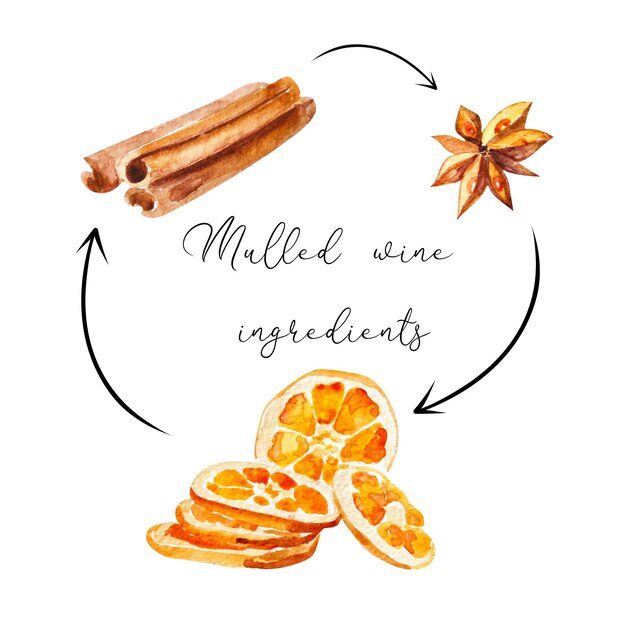Access to sustenance is a fundamental human right, yet millions of individuals endure food insecurity every day. Food banks, often referred to as food pantries, provide an invaluable service to individuals and families facing such challenges. They serve as a beacon of hope, ensuring those in need can secure necessary nourishment.
What exactly are these food banks, and how do they function? These establishments exist in virtually every city, yet their inner workings remain something of a mystery to many people. One might wonder about the source of their food supplies, their operational strategies, or their outreach methods. This article aims to demystify these aspects, offering a comprehensive overview of the inner workings of food pantries.
The understanding of the operation and role of food banks is critical for rallying public support for these philanthropic enterprises. Knowledge about how these entities acquire and distribute food can encourage individuals and businesses to contribute, whether through monetary donations, volunteer hours, or food donations. Join us as we explore the world of food banks and their complex yet essential role in society.
THE SIGNIFICANCE OF COMMUNITY FOOD BANKS
In the current global scenario, community food banks serve as crucial linchpins in ensuring that everyone has access to nutritious, adequate meals. They play a pivotal role in safeguarding people’s health, particularly among vulnerable groups such as the poor, unemployed, and homeless. These food banks are particularly significant in urban and rural areas where economic disparities are more pronounced.
With the escalation of living costs, many families are unable to afford healthy, balanced meals. In such dire circumstances, community food banks become an essential lifeline. They ensure that families have access to high-quality, wholesome food that offers necessary sustenance. In addition, this reduces the risk of malnutrition and diseases linked to poor eating habits.
The role of these food banks extends beyond just providing food. They also incorporate educational programs that teach not only about proper nutrition and diet, but also about financial planning and budgeting for food. This holistic approach ensures that individuals develop long-term strategies to improve their food security and general wellbeing.
COMMUNITY FOOD BANKS AND SOCIAL SOLIDARITY
A key advantage of community food banks is the element of social support they offer. These institutions foster a sense of community and solidarity, something that is particularly important in times of difficulty and crisis. By engaging volunteers and supporters from across the community, they act as binding forces, bringing people together to collectively fight against hunger and poverty.
The tangible impact of community food banks is significant in addressing food insecurity, but their relevance is recognized at an intangible level too. For many, these food banks are symbols of hope and resilience, demonstrating that concern for others extends to the everyday necessity of food. Whether in terms of supporting local farmers, advocating for sustainable food systems, or simply standing with those in need, the centrality of community food banks cannot be overstated.
UNDERSTANDING THE WORKING MECHANISM OF FOOD BANKS
Food banks, commonly known as food pantries, operate as non-profit organizations that source and distribute food to those in need. The entire process is highly organized and collaborative, ensuring that as many individuals and families as possible benefit from their services.
The Initial Stages: The journey begins with collating food resources. Food pantries coordinate with multiple sources like supermarkets, grocery stores, restaurants, farms, and individual donations to secure a variety of food items. Additionally, some food pantries also participate in government programs to receive food supplies.
Storage and Organization: Food pantries are composed of storage locations where incoming food is sorted according to type, quality, and shelf-life. These locations are typically designed to facilitate large quantities of food and often have specific sections to properly store dry, fresh, refrigerated, and frozen foods. The collected food is then carefully organized for easy distribution.
PROCESSES INVOLVED IN THE DISTRIBUTION OF FOOD
Preparation of Food Boxes: Once the food has been sorted and stored, food bank staff members or volunteers prepare food boxes. The content of these boxes often includes a balanced mix of fresh products, canned and dry goods, dairy products, and sometimes meat. The variation in content largely depends on what has been donated and the specific dietary needs of the pantry’s visitors.
Distribution: This next stage involves getting the food to those who need it. Some food banks operate on a walk-in basis where individuals and families come in to collect food boxes. Others have a home delivery system or designate collection points where those in need can pick up their food packages.
The Final Stage: Even when the food has reached those in need, food pantries often follow-up to ensure that they are adequately providing for their visitors. Feedback is a crucial part of this system as it allows food banks to monitor their effectiveness and continually improve their service.
To summarize, food pantries function on a collaborative model beginning with the sourcing of food, involving various stages of sorting, storing, and packing, culminating in the distribution to diebians. A constant cycle of feedback and refinement allows these organizations to adapt to changing needs and continue their mission to fight food scarcity.
UNDERSTANDING THE SUPPLY CHAIN IN FOOD PANTRIES
The query that often arises when discussing food pantries: from where do these organizations get their supplies? The reality is that the actual sources of food are varied, from grocery stores to individual donations.
A LOOK INTO THE COMPLEX NETWORK OF SUPPLIERS
One of the primary sources for food pantries is retail grocers. These may comprise local supermarkets, national chains, or specialty food stores. Retailers often find profitable partnerships with food pantries, allowing them to donate surplus, close-to-date, or unsold food items rather than let them go to waste.
The food industry at large also plays a critical role in stocking food pantries. Food manufacturers, distributors, and industry groups often donate surplus or imperfect goods to food pantries. Such agreements not only enable these corporations to contribute responsibly to the community but also to gain tax benefits in some cases.
Another significant source of supply is individual donors. Many people contribute non-perishable food items, particularly during holidays and themed donation drives. Individuals also donate fresh produce from their gardens or leftover perishable items.
- Gleaning programs: Through these initiatives, volunteers recover leftover crops from farmers’ fields after harvest, which are then donated to food pantries.
- Community food drives: Schools, churches, businesses, and other local organizations often hold food drives to collect non-perishable items for their local food pantry.
- Government Programs: Federal and state government programs provide a portion of the products found in food pantries.
In conclusion, an intricate web of contributors from the food industry, individual donors, volunteers, government programs, and more, take part in keeping the shelves of food pantries adequately stocked. Their efforts directly support struggling individuals and families, essentially helping ensure no one in the community goes hungry.
HOW TO AVAIL SERVICES FROM FOOD BANKS: CRITERIA AND ENROLLMENT PROCEDURE
Food banks, also known as food pantries, play a crucial role in providing food assistance to individuals and families facing food insecurity. However, it is important to understand that not everyone may be able to directly access these services. The process of making use of these facilities often involves meeting certain eligibility conditions and undergoing a particular application process.
ELIGIBILITY SPECIFICATIONS
Contrary to popular belief, food banks do not provide services to just anyone. They primarily cater to those people who are significantly affected by factors such as poverty, unemployment, or any other form of financial hardship. Qualifying for assistance from food banks may involve the verification of income, job status, or even the size of the family. Different food pantries may have varying qualifying criteria, so it is effective to check the specific requirements of the local pantry.
Some common eligibility criteria include:
- Proof of income below a particular threshold.
- Papers that justify unemployment or underemployment.
- Verification of unforeseen financial struggles like medical emergencies or sudden job loss.
- An assertion of the number of family members that need assistance.
THE APPLICATION PROCESS
To secure support from a food pantry, an eligible person or family must complete the required application process. This generally involves providing relevant personal details (like ID, address, family size), proof of income, and description of current circumstances warranting the need for assistance.
Applications can be lodged in person, where designated personnel would provide necessary guidance, or via online platforms, if available. To ensure a successful application, it is suggested:
- To be honest and transparent while detailing personal circumstances.
- To complete all sections of the application form, providing required documents in their original form or as clear copies.
- To follow up on the application after submission.
In conclusion, access to food pantries involves meeting certain eligibility conditions and completing the application process. It benefits those facing food insecurity, providing them essential sustenance during tough times.
FAQ: WHAT IS A FOOD PANTRY
What is a food pantry?
A food pantry is a nonprofit organization that distributes food to those who have difficulty purchasing enough to avoid hunger. They can be found either at stand-alone facilities or within existing community organizations such as churches or schools.
Who can access food pantry services?
It mostly depends on the specific policies of each food pantry. Some pantries serve specific populations such as children, the elderly, or those with specific health conditions. However, most food pantries serve people in need regardless of their status or income.
How do I find a food pantry in my local area?
There are various resources online to find local food pantries. One of them is the Food Pantries organization website which contains a directory of food banks throughout the United States. You could also consult your local city or county’s resources or talk to community organizations.
What documents are required to apply for food pantry services?
The documentation required varies from pantry to pantry. Some may require proof of income, residence, and the number of people in your household. It’s best to call ahead or check the pantry’s website to find out what documents you need to bring with you.
Are there any costs associated with accessing food from a food pantry?
No, food pantries give food free of charge to those who need it. They are typically funded via donations from businesses, individuals, and government programs.
Can I use the food pantry services more than once?
Yes, there is typically no limit on the number of times you can visit a food pantry, although some may have certain policies about frequency of visits. It’s best to check with the specific food pantry to understand their rules.
What’s the difference between a food bank and a food pantry?
A food bank is a non-profit organization that acts as a distribution center to store and provide millions of pounds of food and other products to various food programs in a specified area. On the other hand, food pantries are often local establishments, like community centers or churches, that distribute food directly to the public.
How do food banks distribute food directly to those in need?
Food banks distribute food directly through various programs including food pantries, soup kitchens, school programs, and mobile food pantries. They work with partner agencies and community partners to ensure the distribution reaches every community.
Are there differences between mobile food and mobile food pantry?
Yes, while mobile food refers broadly to any food initiative that’s on the move, a mobile food pantry is a specific type of mobile program where trucks or vans deliver free food, including fresh food and canned goods, directly to the public in areas where food might not be easily accessible.
How do food pantries work to ensure they provide nutritious food?
Food pantries rely on donations and partnerships, often with local food banks, to stock their shelves. They prioritize obtaining nutritious food, including fresh food and healthy food options, to provide to families in need. Many food pantries also partake in the emergency food assistance program (TEFAP) to ensure they provide people with balanced meals.
What role did food banks and food pantries play during the pandemic?
During the pandemic, there was a surge in families suffering from the cycle of poverty and seeking help. Food banks and food pantries played a crucial role in providing emergency food assistance, especially when many faced job losses. They worked tirelessly to end hunger, distribute pre-packed and pre-packaged meals, and offer grocery products to those in need.
How does Feeding America support hunger-relief initiatives?
Feeding America is a nationwide organization that works with over 200 food banks to feed millions. They share the same commitment to end hunger, providing millions of meals to families. They support food banks in their efforts to distribute millions of pounds of donated food, including from programs like Second Harvest and community outreach efforts.
What types of pantries are there and how do they differ?
There are many types of pantries including food pantries, mobile pantries, and school programs. Food pantries distribute food directly in a specific location, mobile pantries provide food on the move to underserved areas, and school programs ensure children receive nutritious meals.
What’s the relationship between hunger and food banks’ mission?
Food banks’ main mission revolves around hunger-relief. They recognize the need to feed families in need and are dedicated to breaking the cycle of poverty. Through community outreach and partnerships with community centers, they seek to provide free food and ensure no one goes hungry.
Where can someone get food if they’re in need?
Individuals in need can get food from their local food bank, food pantry, or soup kitchens. They can also benefit from programs like the emergency nutrition assistance program, school programs, and mobile pantries that distribute food in various communities.
What is the role of partner agencies in helping food banks and food pantries?
Partner agencies are organizations that collaborate with food banks and food pantries in their mission to provide hunger-relief. They can range from community centers to other non-profits, all of which share the same commitment to end hunger. They might offer distribution points, assist in community outreach, or aid in other capacities like providing shelf-stable items and grocery products.






